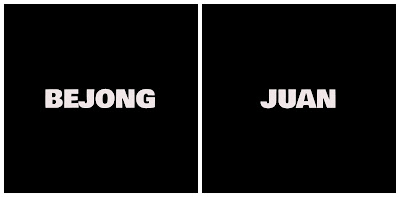We don't write an awful lot in Chamorro.
Dalai. Many Chamorros don't even speak Chamorro.
And, being immersed in an English-speaking and an English-writing world, we are apt to let that influence us when we attempt to write in Chamorro.
But, itt was the Spanish and not the Americans who taught our ancestors the Roman alphabet and, for whatever reason, the Spaniards chose to use the letter Y (mainly) to represent the Chamorro sound that, in English, we might spell DZ. I have an idea why they used Y to stand for Chamorro DZ but that's something for another blog post.
Chamorro has its own sound, represented by the letter Y.
Check this out :
And so that's how we got the Chamorro Y. It has its own sound. And we really ought to be very familiar with it because we have two large villages whose names begin with Chamorro Y.
In Saipan, there is a place called Obyan and another called Chalan Kiya, and in both cases the Y is Chamorro Y, not English or Spanish Y.
We also have the surname Ayuyu.
And yet, despite an abundance of cases where the Chamorro DZ sound is spelled with a Chamorro Y, our Americanized minds revert to the English J when we want to say Chamorro DZ.
For example, in the picture at the very top, many people spell the family nickname Beyong with a J.
Or the family nickname Goyo with a J.
Or the family nichname Yeye with a J.
And in vocabulary, there are many people who spell it LATIJA and TITIYAS, instead of LATIYA and TITIYAS.
In these cases, we're switching from a Spanish-era Chamorro spelling to an American-era English spelling. We're mixing up two spelling systems.
So what happens in the case where the Bejong's first name is Juan?
In this example, the J has two different sounds. In Bejong, an American J. In Juan, a Spanish (and Chamorro) J.
If, in Chamorro, J and Y sound the same (which they don't), then what becomes of Joaquin Jeje and Josefa'n Gojo?
Far better to stick to the very clear Chamorro Y. Jesus Yeye. Juana'n Goyo. Joaquina'n Beyong.
Even in the top picture, the Siboyas family page keeps the Chamorro Y sound, instead of spelling it Sibojas.
LL
Just to complicate things further, the Spaniards also used LL for the Chamorro DZ sound.
This is because, in Spanish, LL sounds the same as Y.
And so Acfalle, Tajalle and Quintanilla all have the Chamorro DZ sound, because LL in Spanish sounds like Y, and Chamorro Y is like English DZ.
And so, some Goyos also spell their nickname Gollo.
But it's also perfectly right, in Chamorro, to spell it Goyo.




I assume the Spanish used the letter "y" to represent the Chamoru "dz" sound because in various Spanish-speaking cultures like Argentina, y & ll are pronounced "dʒ" (like an English "j") or just "ʒ" (like a French "j"), and that was therefore the closest approximation since "dz" is not a combination of phonemes that occurs in Spanish.
ReplyDeleteI was wondering about the surname Chargualaf. Gualaf as you probably know refers to crab hunting in Chamoru. And the "char" looks like the negativizing prefixes cha'- and chat-. So it looks like it would maybe mean "shouldn't hunt crabs". But maybe it's a "false friend" situation like the name Matagolai, and one or both of those components are not what they seem?